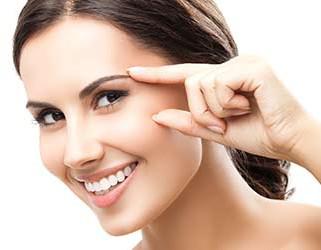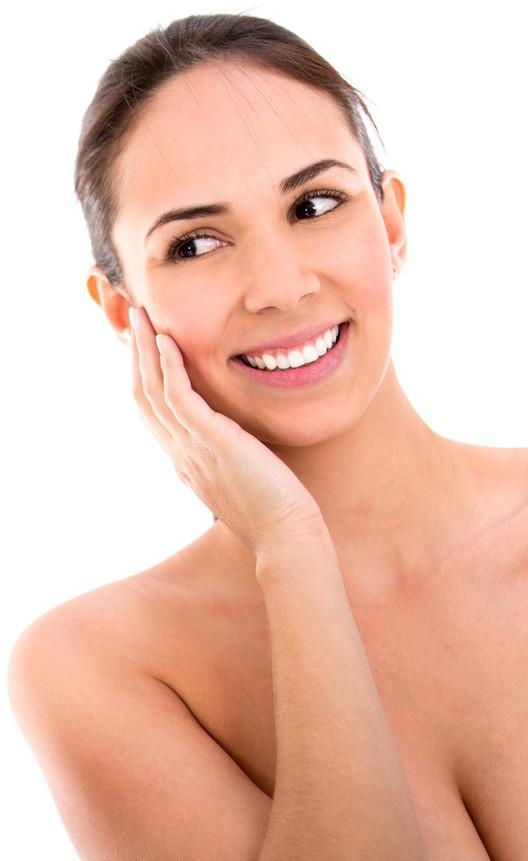
It has been around for a number of years now and the popularity of Botox shows no signs of abating. When carried out properly, Botox treatments can be a very effective way of addressing a number of concerns and can give great, natural-looking results. However, there is a lot of misinformation out there about the product itself, its safe usage and effects, so it might be a good idea to outline what you need to know about the treatment.
Now a byword for the treatment, Botox is actually a brand name. It is a form of botulinum toxin, delivered via injection, and it is most commonly used as a cosmetic treatment to temporarily smooth out wrinkles and lines on the face.
Botox can also be used to treat excessive sweating (also know as hyperhidrosis) in the under arm and palm areas. In these instances, it temporarily blocks the chemical signals from the nerves that stimulate the sweat glands, which results in a reduction in the amount of sweating. It can also be used in the treatment of migraines, and some other medical conditions. It is, however, most commonly used as a treatment to remove the signs of ageing and reduce wrinkles, and for the purpose of this article, we will focus on this.
Broadly speaking, anyone who wants to treat an area of concern or manage the signs of the ageing process can at least consider the treatment. As I mentioned in a recent article in Irish Tatler magazine, Botox can also be used in younger patients (in their 20s) as a pre-emptive treatment for lines and wrinkles. However, not all patients are good candidates and certain medical conditions and medications can render a person unsuitable. This is why it is important to have a full consultation with a qualified medical professional before treatment, during which you should address why you would like the treatment and declare your full medical history.

Injectables such as dermal fillers and Botox can be a very effective and proactive means of facial rejuvenation. Botox can temporarily minimise the appearance of deep expression lines or furrows in the face. When it comes to my patients, I tend to use it to treat frown lines between the brows and on the forehead as well as crow’s feet around the eye area, and I find it is a very effective treatment to help rejuvenate the area around the eyes if a patient does not want to undergo a surgical procedure such as eyelid surgery or blepharoplasty.
The botulinum toxin, a purified protein, is injected into the facial muscle to be targeted, temporarily relaxing it to give a smoother appearance. As a result, lines and furrows are reduced in appearance.
There can be an overall improvement in the features, lasting from four to six months. Patients often report being told they look well or refreshed, as opposed to people noticing lines are no longer present. When used correctly the effects are very natural-looking.
There is no downtime involved but the treatment itself can cause some bruising in localised areas immediately after the procedure. As with most procedures, there are issues to be aware of before undergoing treatment. Side-effects may include some pain, swelling and headaches. If Botox was administered incorrectly to the eye area or mouth and targeted the wrong muscle groups, drooping of these facial areas may occur. Again, this is a major reason why choosing an experienced practitioner with expert knowledge of facial structure will ensure the best possible results.
If you are considering non-surgical facial rejuvenation treatments such as Botox, I can advise on the best options for you. Contact us to arrange a consultation.
Download my new eBook on The Ten Year Beauty Plan: The Process For A Younger Looking Face here:

It has been around for a number of years now and the popularity of Botox shows no signs of abating. When carried out properly, Botox treatments can be a very effective way of addressing a number of concerns and can give great, natural-looking results. However, there is a lot of misinformation out there about the product itself, its safe usage and effects, so it might be a good idea to outline what you need to know about the treatment.
Now a byword for the treatment, Botox is actually a brand name. It is a form of botulinum toxin, delivered via injection, and it is most commonly used as a cosmetic treatment to temporarily smooth out wrinkles and lines on the face.
Botox can also be used to treat excessive sweating (also know as hyperhidrosis) in the under arm and palm areas. In these instances, it temporarily blocks the chemical signals from the nerves that stimulate the sweat glands, which results in a reduction in the amount of sweating. It can also be used in the treatment of migraines, and some other medical conditions. It is, however, most commonly used as a treatment to remove the signs of ageing and reduce wrinkles, and for the purpose of this article, we will focus on this.
Broadly speaking, anyone who wants to treat an area of concern or manage the signs of the ageing process can at least consider the treatment. As I mentioned in a recent article in Irish Tatler magazine, Botox can also be used in younger patients (in their 20s) as a pre-emptive treatment for lines and wrinkles. However, not all patients are good candidates and certain medical conditions and medications can render a person unsuitable. This is why it is important to have a full consultation with a qualified medical professional before treatment, during which you should address why you would like the treatment and declare your full medical history.

Injectables such as dermal fillers and Botox can be a very effective and proactive means of facial rejuvenation. Botox can temporarily minimise the appearance of deep expression lines or furrows in the face. When it comes to my patients, I tend to use it to treat frown lines between the brows and on the forehead as well as crow’s feet around the eye area, and I find it is a very effective treatment to help rejuvenate the area around the eyes if a patient does not want to undergo a surgical procedure such as eyelid surgery or blepharoplasty.
The botulinum toxin, a purified protein, is injected into the facial muscle to be targeted, temporarily relaxing it to give a smoother appearance. As a result, lines and furrows are reduced in appearance.
There can be an overall improvement in the features, lasting from four to six months. Patients often report being told they look well or refreshed, as opposed to people noticing lines are no longer present. When used correctly the effects are very natural-looking.
There is no downtime involved but the treatment itself can cause some bruising in localised areas immediately after the procedure. As with most procedures, there are issues to be aware of before undergoing treatment. Side-effects may include some pain, swelling and headaches. If Botox was administered incorrectly to the eye area or mouth and targeted the wrong muscle groups, drooping of these facial areas may occur. Again, this is a major reason why choosing an experienced practitioner with expert knowledge of facial structure will ensure the best possible results.
If you are considering non-surgical facial rejuvenation treatments such as Botox, I can advise on the best options for you. Contact us to arrange a consultation.
Download my new eBook on The Ten Year Beauty Plan: The Process For A Younger Looking Face here: